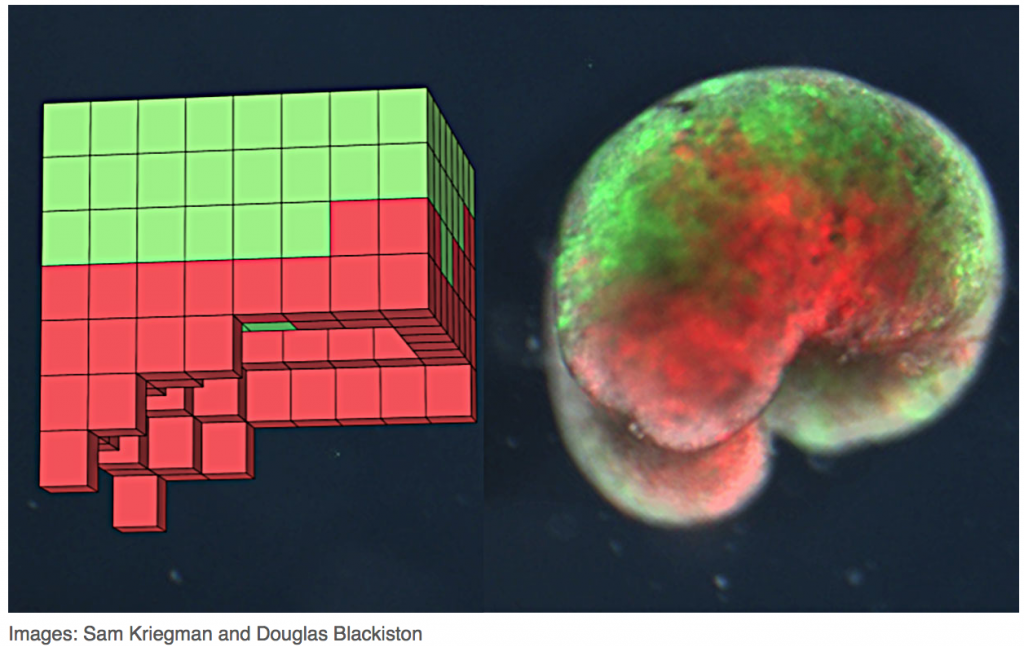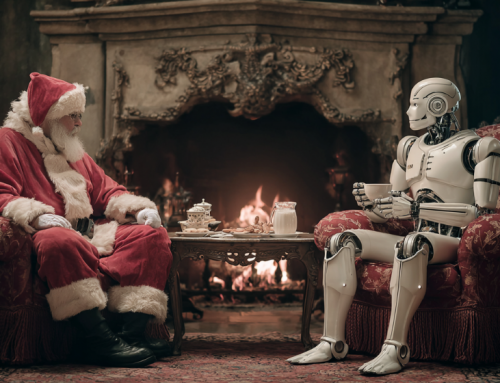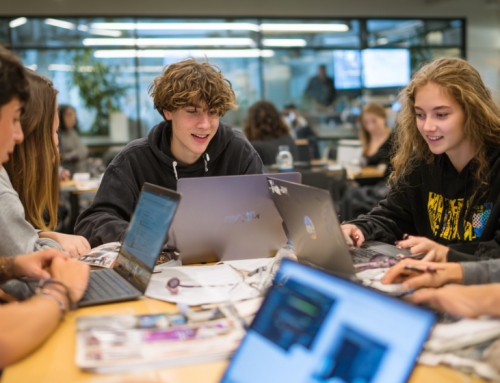
(Source: Spectrum.ieee.org)
Microbiotic Robots Can Grow, Adapt Similar to Living Beings
A wide range of robots are available now, ranging from bots that clean floors in Walmart to those that guide patients and visitors at hospitals to worker bots that spot-weld auto frames in factories. In nearly any physically demanding situation, a robot could be created to do the job.
So far, even with AI as the main driver of some robots, the one thing companies have not been able to do is make robots that “live” and heal themselves if they break down. Or help to heal human bodies. However, according to an article from spectrum.ieee.org, researchers are close to a breakthrough in microbiotic robotics.
A team of scientists at the University of Vermont and Tufts University in Massachusetts has used a supercomputer to design novel lifeforms with specific functions, then built those organisms out of frog cells.
The new, AI-designed biological bots crawl around a petri dish and heal themselves. Surprisingly, the biobots also spontaneously self-organize and clear their dish of small trash pellets.
“This wasn’t something that we explicitly selected for in our evolutionary algorithm,” says Josh Bongard, a roboticist at the University of Vermont who co-led the research, published this week in the Proceedings of the National Academy of Sciences. “It emerges from the fact that cells have their own intelligence and their own plans.”
The idea for AI-designed biobots came from a DARPA funding call for autonomous machines that adapt and thrive in the environment. Bongard and biologist Michael Levin at Tufts University conceived a plan to take advantage of Mother Nature’s hard work and build a machine out of something already capable of adapting: living cells.
Imagine a future robot, perhaps made of titanium, that has an AI brain guiding it, while it regrows its vital parts or outer surface? That isn’t possible yet, but it may be soon. The article explained in-depth the process Bongards’s team used.
The researchers ran an evolutionary algorithm on a supercomputer at the University of Vermont over several days. The algorithm, inspired by natural selection, used biological building blocks to create a random population of new life-form candidates. The algorithm then winnowed through the designs with a fitness function that scored each candidate on its ability to do a certain thing—in this case, the ability to move.
After running 100 algorithms that were putting out billions of designs, the scientists settled on five.
Once constructed, the millimeter-wide biobots moved around a petri dish as the heart cells contracted. When the team put small pellets into the dish, the cells unexpectedly worked together to clump the pellets into neat piles.
So it’s been a difficult road for scientists trying to combine organic properties with metals and other materials.
For now, the miniscule robots are best at locomotion, but Bongard has other tasks in mind. The next step, he says, is developing a “cage bot”—an empty cube to pick up and carry a payload. With that ability, one could build bots out of a person’s own cells, then use them to deliver medications deep into the body without prompting an immune response, the authors suggest.
“As we move further and further away from recognizable organisms, we may need to create new regulations for this kind of technology.”—Josh Bongard, University of Vermont.
A story on MIT’s technologyreview.com, which calls the tiny living robots “xenobots,” warns of potential for ethical concerns as the technology evolves:
“…future versions could be made with nervous systems and sensory cells—even rudimentary cognitive abilities—which would allow them to react to their environment. It is far from clear whether we should treat such robots as machines or living creatures.”
read more at spectrum.ieee.org







Leave A Comment